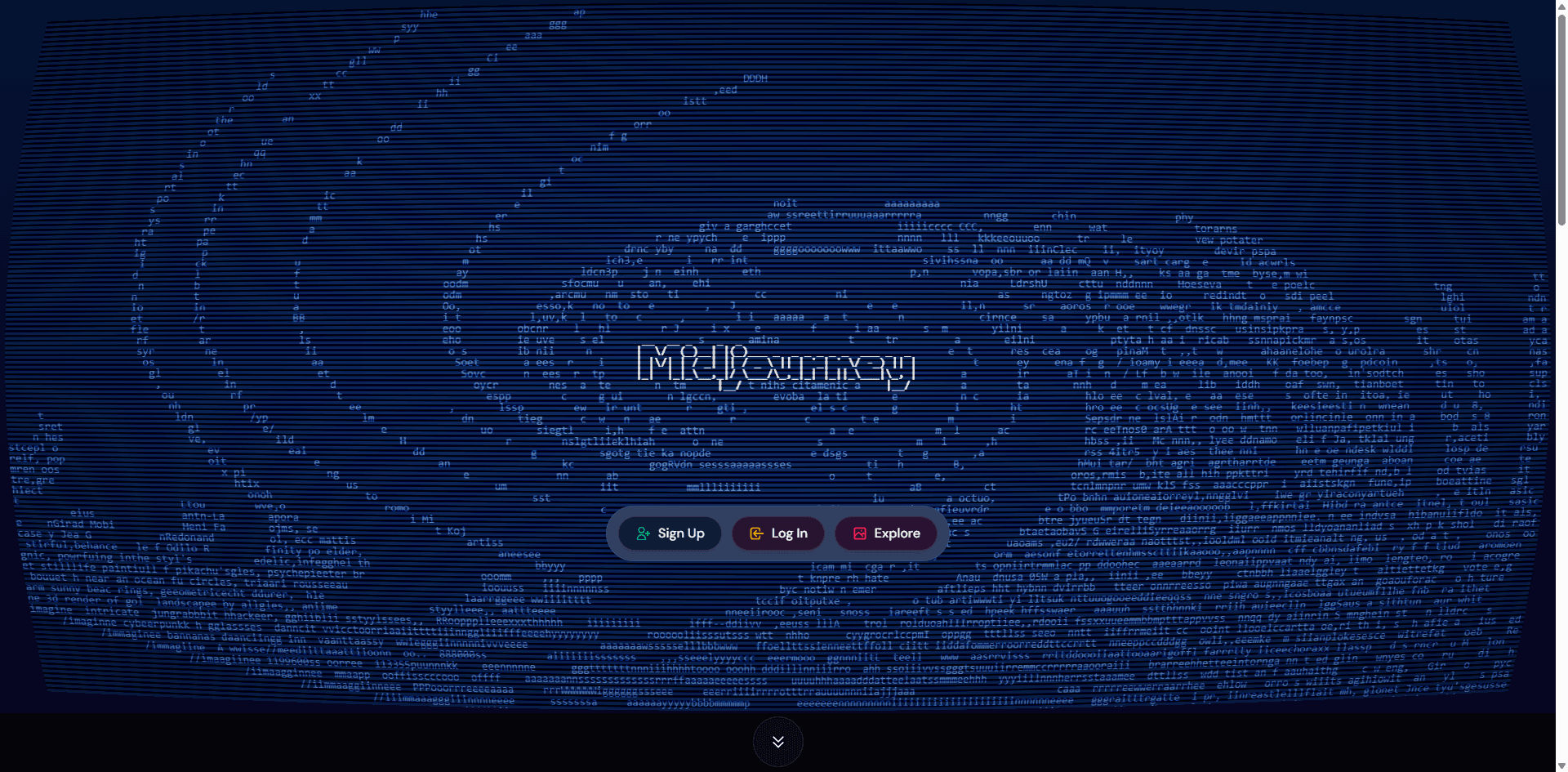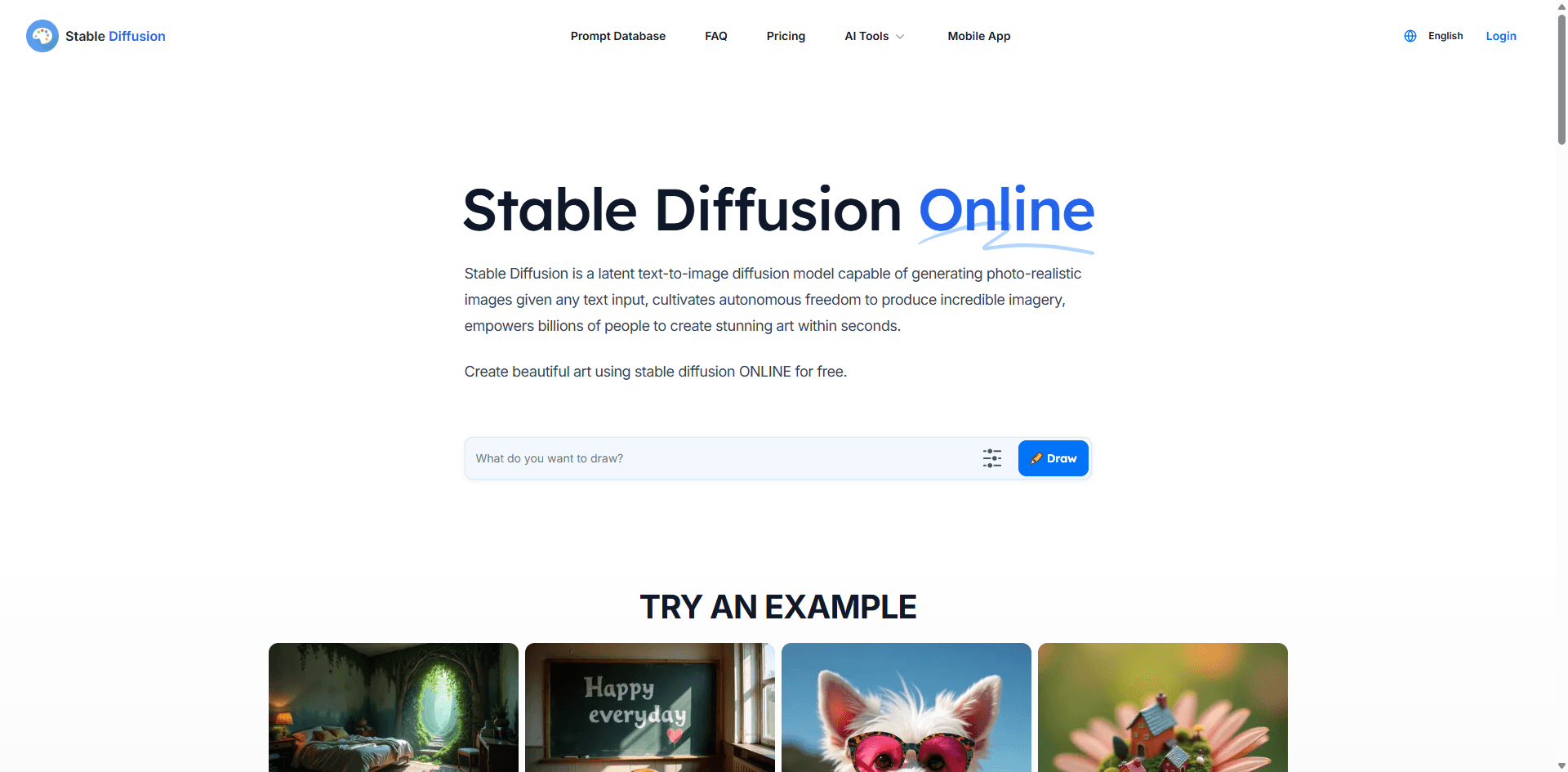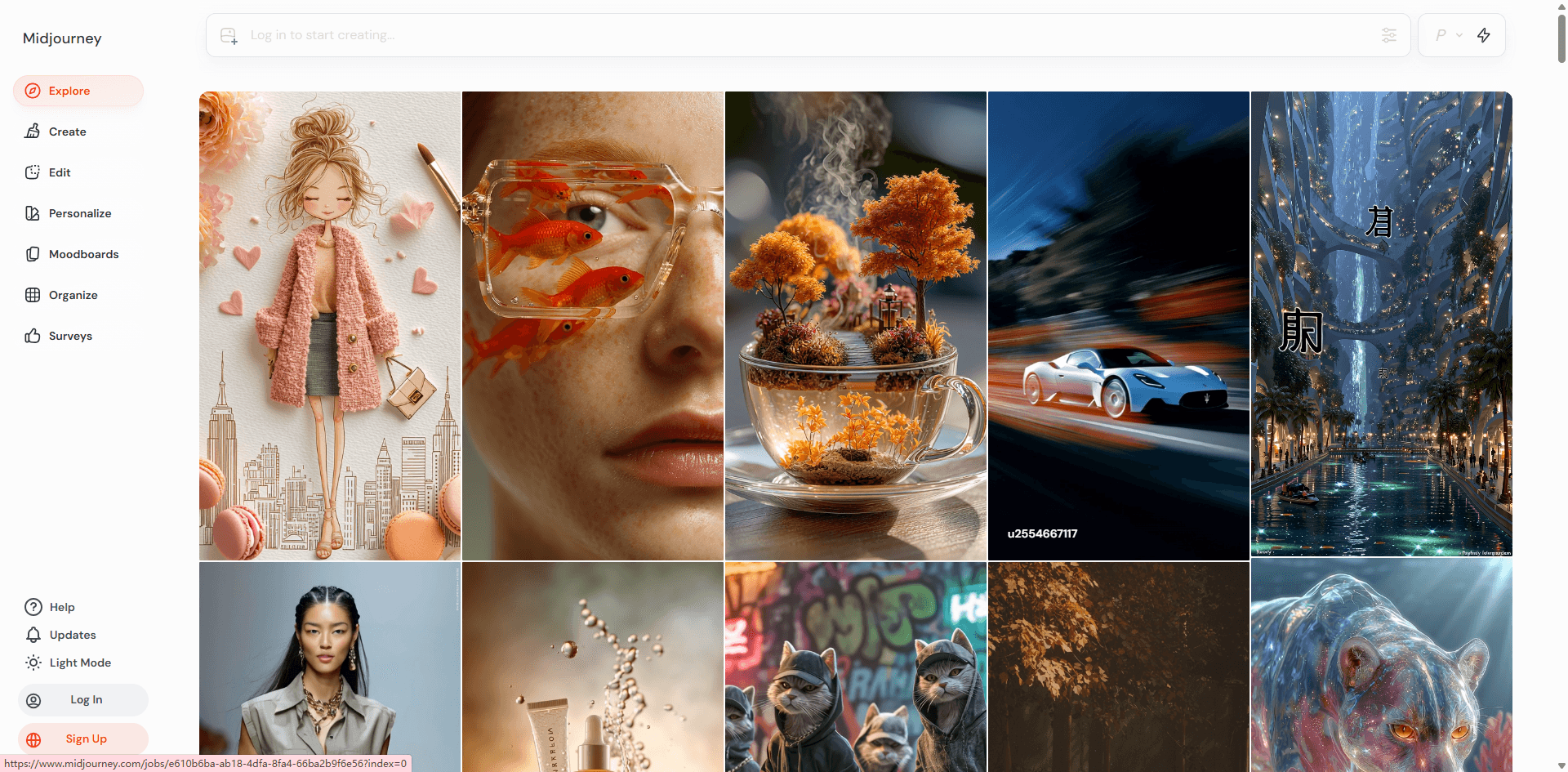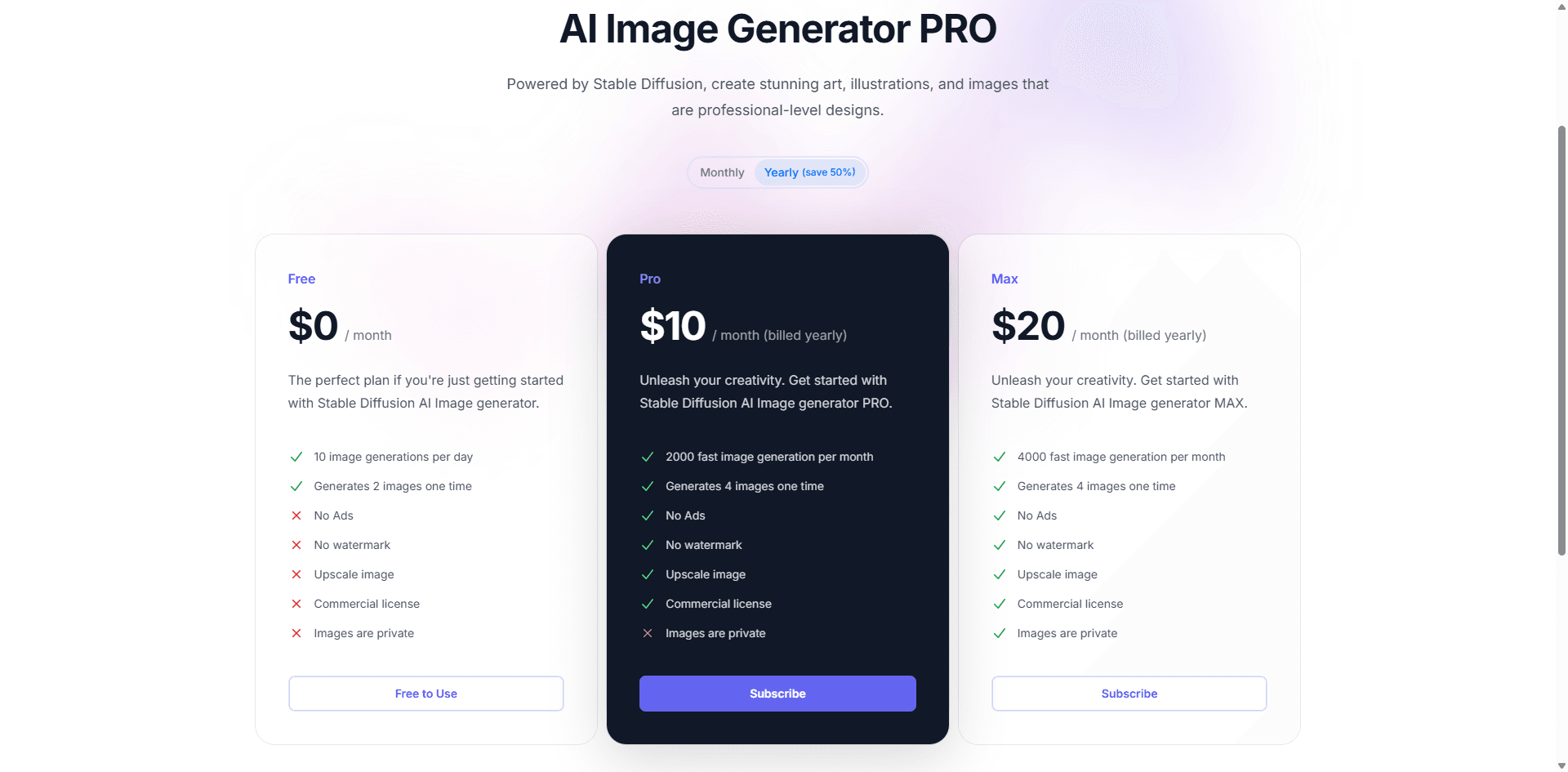Midjourney vs Stable Diffusion: 2025年に本当に使うべきAI画像生成ツールはどっち?
最終更新: 2025-11-13 17:26:56
最終更新日: 2025年10月 | 12分で読めます
完璧なAI生成画像を手に入れようと、正直言って認めたくないほど多くの時間を無駄にしました。日によってはMidjourney、夜中2時にはStable Diffusionの設定をいじりながら、GPUが叫んでいる理由を考え込んでいることも。
最初に誰も教えてくれない事実があります。どちらかを選ぶのは「どっちが優れているか」ではありません。スイスアーミーナイフとシェフナイフ、どっちが良いかを聞いているようなものです。何を切りたいのか次第です。
Midjourneyサブスクリプションに数百ドルを費やし、GPUの寿命も数年は削ったであろう経験から、どちらをいつ使うべきかがわかってきました。そして何よりも重要なのは、どちらかがあなたのパソコンを窓から投げたくなるほどイラつかせる瞬間があるということです。
宣伝文句は飛ばして、本当に重要なことだけを話しましょう。
クイックナビゲーション:
- 横並び比較
- お金の話
- 最初の一歩で頭がおかしくならないために
- どっちが本当に良い画像を作れるのか
- Redditの正しい点(と間違っている点)
本当の違い(簡単な言葉で)
ぶっちゃけ、豪華な比較表も作れますが、率直に言わせてもらいます:
Midjourneyは、評判の良いレストランで注文するみたいなものです。欲しいものを伝えると、美しい料理が出てきて、お金を払う。それだけ。イメージ通りではないこともありますが、ほぼ間違いなく良いものが出てきます。
Stable Diffusionは、自宅にプロ用キッチンがあるようなもの。無限の可能性、完全なコントロール。ただし料理方法を学ばなければなりません。設備も揃える。YouTubeのチュートリアルも何時間も観る。何かが壊れた時にはトラブルシュートも必要です。
実際の比較はこんな感じです:
| 気になるポイント | Midjourney | Stable Diffusion |
| 月額コスト | $10-$120 サブスクリプション | 無料(ハードウェアがあれば) |
| 初回画像までの時間 | 5分 | 5分(ウェブ)~3時間以上(ローカル設定) |
| 習得の難易度 | 週末程度 | 数週間~数ヶ月 |
| 努力なしの結果 | 安定して良い | かなり不安定 |
| 最大限の可能性 | カスタマイズ不可 | 可能性は無限 |
| イライラポイント | 操作範囲が狭い | 覚えることが多すぎる 手間や時間、精神的余裕を重視するならMidjourney。 スマホをJailbreakしたり、細かい設定をいじるのが好きならStable Diffusion。 |
これらのツールが実際何なのか
Midjourney: マネージドサービス

Midjourneyは完全にDiscord上で動作します。人によっては天才的だと思うし、イライラするだけかもしれません。/imagineとプロンプトを打ち込んで、約1分待つと4種類の画像バリエーションが出てきます。それが全てです。
毎月課金が必要で、オフラインでは使えず、Midjourneyチームが決めた仕様に従うしかありません。それでも得られるのは、一言で言えば「ちゃんと動く」という安心感。毎回問題なく動作。設定不要、構成不要、「なんでGPUが100%で画像がクソなの?」みたいなこともありません。
会社は比較的小規模で、謎めいています。論文も出さず、学習データの説明もせず、ひたすら画像品質のアップデートを続けています。Version 6は人物やコンセプトアートで本当に優秀です。
Stable Diffusion: オープンソースプロジェクト

Stable Diffusionは「製品」というより…「エコシステム」という感じ?Stability AIが2022年にベースモデルをオープンソース化したとたん、ネットはすぐ沸騰しました。
無料でダウンロード可能。自分のPCで動かす、改造する、自分の画像で学習させる、商用プロダクトも作れる。コミュニティが作ったカスタムモデルは、アニメから写真のようなポートレート、さらには非常に特殊な趣味(リンクは貼りませんが)まで数千種類あります。
現行バージョンのSDXLは、設定さえしっかりすれば本当に優秀です。ただ、その「きちんと設定する」という部分が最大の壁です。
この比較が本当に複雑な理由
多くの記事は「2つの製品を比べている」ように書いていますが、実際はそうじゃありません。1つはすぐ使える有料サービス。もう1つは習得に数週間かかるかもしれない無料ソフトウェア。
Netflixと自分でPlexサーバーを構築するのを比べているようなものです。どちらでも映画は観られます。1つは月$15でどのデバイスでも使える。もう1つは無料でも、技術的知識やハードウェア、時間、トラブル対応が必須。
みんなが本当に気にする「お金の話」

Midjourneyの料金
Midjourneyは無料トライアルをだいぶ前に廃止したので、使い始めから有料です:
- Basic: $10/月で約200枚生成
- Standard: $30/月で「Fast」モード15時間+「Relax」モード無制限
- Pro: $60/月でFast時間倍増&Stealthモード追加(画像が公開されない)
- Mega: $120/月で毎日数百枚生成するヘビーユーザー向け
Fastモードは1枚あたり30~60秒程度。Relaxモードはサーバー混雑状況により2~10分の待ち時間。私はStandardを使っていますが、Relaxモードでほとんど困りません。
Basicプランはほぼ使い物になりません――200枚と聞くと多く感じますが、1枚当てるために20回バリエーションを生成したりします。私は4日で使い切りました。
Stable Diffusionのコスト(実は複雑)

ソフトウェア自体は完全無料です。ただし、現実という名の壁があります。
ローカルで動かす場合: NVIDIA製のグラフィックカードが必要です。しかも、どんなカードでも良いわけではありません――最低でもRTX 3060(VRAM8GB)が推奨。私は1660 Tiから始めて、めちゃくちゃ遅かった。3080にアップグレードしたら、生成時間が2分から15秒に短縮されました。
まともなGPUは中古で$400-$800、新品で$800-$1200ほど。つまり、「無料*」にはかなり大きな注釈がつきます。
クラウドサービスを使う場合:
- Google Colabは無料枠があり、テストには十分です
- RunPodはそこそこのGPUで1時間あたり約$0.50ほどです
- Vast.aiはより安価ですが、やや分かりづらいです
- DreamStudioは画像ごとに課金されます
実際にかかったコスト:
- Midjourney:毎月 $30 を安定して支払っています
- Stable Diffusion:GPUに$800(1回だけ)、その後は月額$0
- 損益分岐点:約2年
でも、ここで計算が変わったんです。Stable Diffusionなら月額制限がないので、圧倒的に多くの画像を生成できるようになりました。50パターンをまとめて生成して、最高のものを選ぶことができるんです。Midjourneyでは高速枠を消費しないとそれができません。
では、どちらが安い?
もしライトユーザー(1ヶ月200枚未満)なら:Midjourney Basic($10/月)がGPU購入よりお得でしょう。
もし本気(1ヶ月500枚以上)なら:Stable Diffusionは1年未満で元が取れます。
もしプロ(数千枚生成)なら:Stable Diffusion以外考えられません。
ただし、時間の価値も考慮しましょう。Stable Diffusion環境構築に、私の場合6時間かかりました。手間を避けるために月$30を払う価値があるかどうかは、あなた次第です。
始め方(どれくらい大変なの?)
Midjourneyのセットアップ:実際簡単です
誇張なしで言います—コーヒーを淹れるより早かったです:
- Discordアカウントを作成
- midjourney.comにアクセス
- サブスクライブボタンをクリック
- プランを選択
- /imagine a cyberpunk city at nightと入力
- 45秒後に最初の画像を受け取りました
Discordの画面は最初は奇妙です。プロンプトを公開チャンネルで打ち込むので、誰でもあなたの生成内容が見られます。まるで混んでるカフェで作業している気分。でも、慣れるか、もしくは$60/月のステルスモードに加入すれば画像が非公開になります。
コマンドはシンプル:新規画像は /imagine、アップスケールやバリエーションはボタンで操作。これが知っておくべき90%です。
Stable Diffusion:自分で冒険を選ぶ
簡単な方法(Webアプリ): DreamStudioやNightCafeに登録→すぐに生成開始。5分でOK、普通に使えますが画像ごとに課金&ローカル生成のフルパワーは味わえません。
難しい方法(ローカルインストール): ここからが本番です。実際何が必要か正直にお伝えします。
まず、自分のGPUが対応しているか確認が必要です。タスクマネージャーのパフォーマンスタブでGPUをチェック。NVIDIAかつVRAMが6GB以上ならおそらく大丈夫。AMDやIntelの場合...幸運を祈ります。Stable DiffusionはNVIDIAが強く推奨です。
次にAutomatic1111というローカルで動作するWebインターフェースをダウンロードします。公式ガイドでは「簡単」と書かれていますが、私はPythonエラーやパス設定のトラブルで2時間も試行錯誤しました。人によってはもっとスムーズにいくかも。
起動できたら、モデルをダウンロードします。SDXLの基本モデルはなんと6.5GB。さらに特定のスタイル用にCivitAIから他のモデルも欲しくなります。私のモデルフォルダは現在147GB…ちょっと病的です。
そして以下について学ぶ必要があります:
- サンプリング手法(Euler aとDPM++ 2M Karrasなど)
- CFGスケール(プロンプトへの忠実度)
- ステップ数(イテレーション回数)
- シード(再現性確保)
- ネガティブプロンプト(不要なものの指定)
- LoRAやembedding、controlnetなど...
怖がらせるつもりはありません。現実的な期待値を持ってほしいのです。Stable Diffusionの最初の1週間は苦戦しました。2週目でやっと慣れてきて、3週目にはMidjourneyでは作れない画像も生み出せるようになりました。
でも最初の数日は正直しんどいです。
学習曲線の現実
Midjourney:初日からまあまあいい画像が作れます。1週間で良い画像、1ヵ月後にはプロンプト技術とともに素晴らしい画像を出せるように。
Stable Diffusion:数日はひどい画像ばかり。でもある日突然傑作が生まれ、理由が分かりません。最終的には設定を理解し、自分の望むものを安定して作れるようになります。多くの人は使い込んで2〜4週間ほどかかります。
やる価値は?必要なコントロールやあなたの忍耐力次第です。
画像品質:みんなが本当に気にする点
さて、これらのツールが実際に生成するものについて話しましょう。
Midjourneyの特有の美学
Midjourneyには独特のルックがあります。見たことがあるはず—少し絵画風でドラマティックなライティング、鮮やかな色、美しい構図。本当に魅力的です。そしてすぐに分かります。
Midjourneyで「戦士の肖像画」と生成すると、ハイレベルなファンタジー画集に載っていそうなものが出てきます。以下にぴったり:
- コンセプトアート
- 書籍の表紙
- アルバムアートワーク
- D&Dのキャラクター
- 洗練されたデジタルアートが必要なあらゆる場面
Midjourneyが苦手とする点:
- フォトリアリズム(できるが「AIアート」感が残る)
- 画像内のテキスト(どれも苦手ですが他ツールも同様)
- 手(昔よりは改善されたが完璧ではない)
- 非常に具体的な指示の遵守
Midjourneyに関して言いたいのは:たとえ指示通りにならなくても、だいたい見栄えの良いものができるということです。プロンプトの一部を完全に無視されても、使える画像が得られることもありました。
Stable Diffusionの体験
Stable Diffusionはまるで…すごく技術力のあるけど超字義通りで芸術的センスゼロのアーティストがいるような感じです。すべて細かく指示しないといけません。
基本のSDXLモデルと基本設定だと、当たり外れがあります。完全に狙い通りの時もあれば、悪夢のような結果になることも。その中間もよくあります。
しかしStable Diffusionが真価を発揮するのは、カスタムモデルです。
フォトリアルな肖像?専用モデルがあります。アニメ調?何十種類も。特定ゲームのアートスタイル?たぶん存在します。私が所有しているのは:
- リアルな写真
- スタジオジブリ風
- 90年代アニメ風
- 建築パース
- 商品撮影
各モデルでAIの実力がまるで変わります。まるで違うアーティストが待機しているような感じです。
適切なモデル&設定さえあれば、Stable DiffusionはMidjourneyを超えることすらできます。ただし使いこなす必要があります。
並べて比較すると
同じプロンプトで両方をテストしました:「steampunk airship at sunset, detailed, cinematic lighting」
Midjourney:約45秒で美しい絵画風の画像と完璧な構図を生成。飛行船も素晴らしい出来でしたが一部細部は違っていました。
Stable Diffusion:最初は微妙。設定を調整し、モデルを変更、プロンプトを修正。5回目で絶賛するほどのフォトリアル画像ができ、Midjourney以上でした。合計10分ほど。
これが違いの要約:Midjourneyは素早く高品質。Stable Diffusionは努力すれば同等以上の品質。
どちらが「より良い」画像?
問いが違います。重要なのは「どちらがあなたの用途により良い画像を作れるか?」です。
コンセプトアート・キャラクターデザイン・ファンタジー系なら:Midjourneyが一貫性と速さで勝ります。
フォトリアリズム、特定スタイル、精密なコントロールが必要なら:Stable Diffusionが有利(使いこなせるなら)。
その他の場合は…正直言ってコインを投げたほうが早いです。
操作性とカスタマイズ性:決定的な違い
これが最大の違い、そして最終的に選択を左右するポイントです。
Midjourneyの限定的な操作コントロール
調整できるのは以下:
- アスペクト比(--ar 16:9)
- 「奇抜さ」の度合い(--chaos)
- 芸術的か字義的かのバランス(--stylize)
- プロンプト複数指定時の画像の重み
- 他画像からのスタイル参照
できるのはこれくらい。できないこと:
- カスタムモデルを訓練すること
- 自分固有のスタイルでファインチューニング
- 完全な構図コントロール
- 一部だけ編集(再生成せずに)
多くの人には十分ですが、こだわる人には物足りないでしょう。
Stable Diffusionの圧倒的な選択肢
私は本当に選択肢が多すぎて困ることもあります。素晴らしい反面、設定を20分間いじって作業が進まないことも。
主な設定項目:
- カスタムモデル:あなたのアート、製品、特定のスタイルでトレーニング可能
- LoRA:キャラクター、スタイル、コンセプトに小規模な追加が可能
- ControlNet:ポーズ、構図、エッジを正確に制御—キャラクターを一貫させる画期的な機能
- インペインティング:画像の特定部分を編集
- img2img:既存画像を変換
- 複数モデル:1枚の画像で異なるモデルをミックス&マッチ可能
最近、自分のアートスタイルでLoRAをトレーニングしました。今はポートフォリオと一致する画像を生成できます。Midjourneyではそれはできません。
問題は?これらの機能を使いこなすには時間がかかることです。ControlNetだけで15種類以上のモードがあります。まだ全部は理解できていません。
実際はどういう意味なのか
きれいな画像がほしい趣味の方なら:Midjourneyの選択肢が少ないのはむしろありがたい。学ぶことが少なく、失敗することも少ない。
ブランド要件があるプロの方なら:Stable Diffusionの高度な制御が不可欠。デザイナーの知人は数百パターンをローカルで生成し、良いものを細かく調整しています。
その中間の方なら:ここが難しいところです。Midjourneyはプロンプト作りに慣れると物足りなく感じるかもしれません。Stable Diffusionは、求めている以上に手間がかかると感じることも。
Redditで実際に言われていること(そして大体正しい理由)
私はr/StableDiffusionやr/midjourneyを大量に読んできました。コミュニティが実際にどう考えているか:
Stable Diffusion派
この人たちは情熱的です。オープンソースにほぼ宗教的。よくある意見:
「SDを習得したら、Midjourneyは補助輪に感じる」 - 半分正解。SDは確かに制御力があります。でも補助輪が欲しいときもある。
「みんな月30ドル払っているなんて信じられない。SDなら無料なのに」 - GPUの費用や時間がかかることは無視しているけど、ヘビーユーザーなら一理あり。
「コミュニティモデルがやばい。何でもモデルがある」 - これは100%本当。CivitAIには何千ものモデルがあり、品質はまちまち。
主な不満点:「なんでこんなに難しいの?」初心者が集まっては圧倒されて消えていきます。習得のハードルは本物です。
Midjourney派
より気軽なユーザーが多く、技術的な人は少なめ。よくあるテーマ:
「毎月払う価値がある。すぐに成果が出る」 - もっともです。時間こそお金。
「コンセプトアートの美学が圧倒的に優れている」 - 主観ですが、多くのアーティストが同意。
「自分のスタイルで学習したいんだけど」 - これが何度も出てきます。最大の制限です。
時々妙な防御的態度も感じます。Stable Diffusionが無料なのに課金している理由を説明しなきゃ、みたいな。でも本当に説明は不要です—あなたの時間や心の余裕には価値があります。
本当に役立つアドバイス
ベストな意見:目的ごとに両方使うこと。
プロ数人が、Midjourneyでクライアント向けプレゼンや素早い探求をし、Stable Diffusionで最終成果を作ると説明していました。両方使えるならそれが一番賢いでしょう。
誰も言わないこと:両方のコミュニティはやや部族的。r/StableDiffusionでMidjourney派だと言うと低評価を食らうし、r/midjourneyでSDが無料だと言うと防御的反応が出ます。部族主義は無視して、自分に合ったものを使いましょう。
誰も最初に話さない本当の制限
Midjourneyの実際の課題
Discord必須なのが独特。 慣れましたが、非技術系のクライアントに「進捗を見るにはDiscordをインストールして」と説明するのは微妙です。
オフラインで使えない。 ネットが落ちたらAIアートは諦めです。
デフォルトで公開。 Pro契約しない限り、画像は全員に見えます。以前、怪しいテストプロンプトを作って公開のまま忘れていて、痛い経験をしました。
検閲が厳しい。 少しでもきわどい画像を生成しようとするとブロック。無害なプロンプトですら理由不明で弾かれることも経験しました。
運営次第。 過去に価格変更があり、機能削除もあり、アルゴリズム調整もありました。支払いしているプラットフォームを自分でコントロールできません。
Stable Diffusionの隠れたコスト
GPUが熱くなる。 ケースファン増設、電気代も上がりました。冗談じゃなく本当です。
モデル品質にばらつき。高評価モデルでも変なアーティファクトが出ることも。原因究明に何時間もかかったことがあります。
アップデートが面倒。Automatic1111の新バージョン?拡張機能が壊れていないことを祈りましょう。私はアップデート後に何時間も修復に費やしました。
コミュニティの進化が早い。新技術・モデル・ツールが次々登場し、追いつくのが大変です。
ストレージ不足に。150GB以上のモデルがドライブに。私はまだ控えめな方です。
正直なおすすめ
両方を徹底的に使ってみた結果:
まずはMidjourneyをおすすめする人:
- 手軽にかっこいい画像を作りたい方
- とにかく時間重視で最大限の制御までは不要な方
- ゲーミングPCや高性能GPUが手元にない方
- AIアート制作を始めたばかりの方
- クライアントワークで安定した品質が必要な方
月額10ドルのBasicプランはひと月試す価値あり。上限に達したらStandardへアップグレード推奨。
Stable Diffusionに直行がおすすめなのは:
- すでにそこそこのNVIDIA GPUを持っている方
- 技術系ツールの学習が好きな方
- 大量に画像を生成したい方
- カスタムモデルをトレーニングしたい方
- カスタマイズ性が重要な分野で働いている方
- 数週間かけて学習する覚悟がある方
両方使うのがいいのは:
- クリエイティブ系のプロの方
- 予算に余裕がある方(30-60ドル/月は事業経費として妥当)
- 用途に合わせて最適なツールを使いたい方
私は今両方使っています。アイディア出しやアート的なものはMidjourney、写真風やカスタムスタイル・大量生成はStable Diffusion。
よくある質問(本当に聞かれるやつ)
Q: Stable Diffusionは本当にずっと無料で使える?
A: ローカル運用なら可能です。ソフトウェアはオープンソースで、あなたの所有物。「無料」は動かせるハードウェアが必要という意味です。
Q: Midjourneyのサブスクは趣味ユーザーに価値がある?
A: Basicが月10ドル?おそらく微妙—すぐ使い切ります。Standardが月30ドル&Relax mode無制限は、常用ならかなり良心的。
Q: 実際どっちが簡単?
A: Midjourneyが圧倒的に簡単。1時間で基礎は分かります。Stable Diffusionは最低でも数日、本当に理解するには数週間かかります。
Q: これらで稼げる?
A: 商用利用は両方可能。AIアートを実際に売れるかはツールより買い手探し次第。市場は飽和気味です。
Q: DALL-Eはどう?
A: 存在はしています。悪くないですが、Midjourneyほどアート向きでもなくStable Diffusionほど自由でもない。正直両者の悪いとこどりです。
Q: コーディングは必要?
A: Midjourneyは不要、Stable DiffusionのWebアプリも不要。ローカルのStable Diffusionもほぼ不要ですが、技術的な説明を読めるなら楽になります。
Q: なぜどちらもテキスト生成が苦手?
A: ディフュージョンモデルの技術的制限です。少しずつ良くなってきていますが、まだ信頼できません。テキストはPhotoshopで後編集がおすすめ。
Q: 就職やクライアント受けはどちらが良い?
A: どちらでもありません。クライアントは使ったツールより、最終成果がプロジェクトに合うかを重視します。
まとめ
どちらのツールも本当にすごいです。文章を打ち込むだけで1分以内にプロレベルの画像ができる時代です。
MidjourneyはAIアート界のiPhone。洗練されていて、信頼できて、高価で、良い意味で機能制限あり。便利さと安定性に課金します。
Stable DiffusionはカスタムPC。パワフルで柔軟、複雑、投資が必要。お金でなく時間と学習が対価になります。
ほとんどの人はまずMidjourneyから始めるべきです。AIアート生成が自分に合うかまずは試す。限界を感じてもっと制御したくなったらStable Diffusionを検討しましょう。
一番良いツールは「本当に使うツール」です。すぐに使えて楽な方が合う人もいれば、細かくいじれる方が合う人もいます。
自分がどちらのタイプか見極めれば、選択肢は自然と決まります。
さあ、何か面白いものを作ろう。
質問・異論・両方使った感想などあれば、コメント歓迎します。
